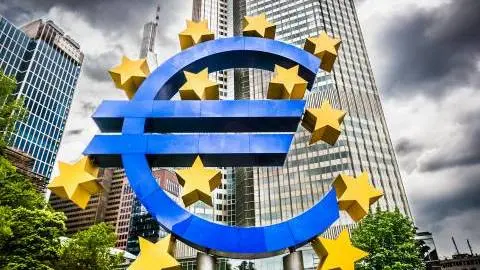ECB performs hawkish backward roll
In today’s meeting, the European Central Bank made a remarkable hawkish backward roll. While there were no changes in the ECB’s action, the comments during the press conference were interesting
Regarding actual decisions, the European Central Bank (ECB) hit the copy-paste keys and kept everything unchanged. As expected, all monetary policy instruments were left unchanged and even the wording was a verbatim copy of the December decisions. The ECB only took out the words “in either direction” when confirming that the Governing Council stood ready to adjust all of its instruments. As the ECB confirmed that interest rates would remain “at present levels or lower levels”, this small change in communication does not signal a change in the ECB’s stance.
It was the press conference and the official introductory statement that brought the excitement today. The ECB still expects a strong economic recovery over the coming months and pointed to strong labour market developments. At the same time, the risks to the economic outlook were still labelled as "broadly balanced" but the ECB stressed more downside factors than it has previously. Regarding the inflation assessment, the ECB was much less outspoken about the expected inflation trajectory than it has been. Even more interestingly, the ECB for the first time in years reintroduced the phrase that “risks to the inflation outlook are tilted to the upside”. If we remember correctly, this risk assessment had disappeared from the ECB’s introductory statements when quantitative easing (QE) was started. While this phrase had been absent from official ECB communication for almost a decade, funnily the well-known hawks Klaas Knot and Jens Weidmann actually used this exact phrase in speeches and comments in September and October last year.
Another crucial element signalling the ECB’s hawkish backward roll today was President Christine Lagarde’s refusal to confirm her earlier statement (that she made several times before) that “it is very unlikely that we will raise interest rates in the year 2022”. The door to a rate hike is wide open, even though Lagarde stressed that the principle of sequencing, i.e ending net asset purchases first before hiking rates, was still in place.
Hawkish push to the March meeting
No one could have seriously expected the ECB to act today as there is simply nothing the ECB can do to bring down inflation immediately. In fact, there is nothing the ECB can or could do to bring down energy prices. Only governments can act by, for example, lowering taxes and by providing financial support to compensate for households’ high energy bills. Maybe this is also another conundrum of the pandemic: governments are needed to bring down energy inflation, while central banks (and low interest rates) are needed to support fiscal stimulus.
All in all, today’s ECB meeting marks an important hawkish shift. For some, it even looks like the late revenge of the hawks. In any case, the ECB postponed taking any next steps until the March meeting when a fresh round of macro, and particularly inflation forecasts, will be available. Lagarde opened the door to a speeding up of asset purchase reductions and a rate hike this year. Taking all this into consideration and assuming that energy prices do not dive over the next four weeks, we expect the ECB to speed up the reduction of net asset purchases and to bring them to an end in September, allowing the ECB to hike the deposit rate at least once before the end of the year.
This publication has been prepared by ING solely for information purposes irrespective of a particular user's means, financial situation or investment objectives. The information does not constitute investment recommendation, and nor is it investment, legal or tax advice or an offer or solicitation to purchase or sell any financial instrument. Read more
Download
Download article
3 February 2022
We find the ‘excitement’ from Thursday’s ECB announcement This bundle contains 3 Articles